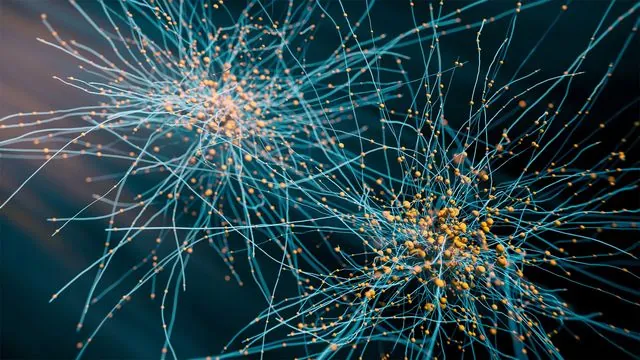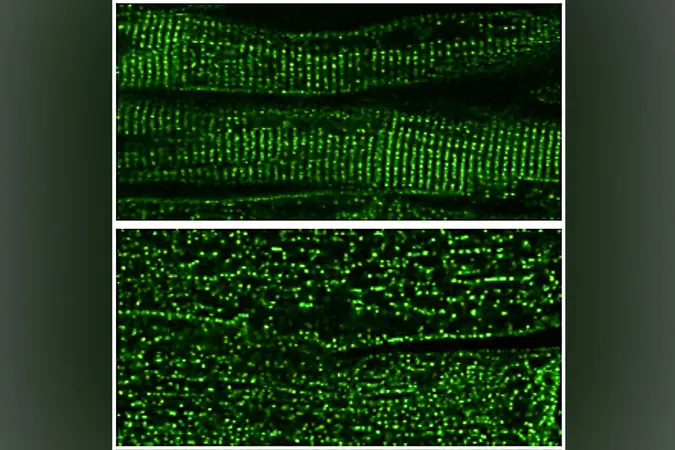
Groundbreaking Research Unlocks the Mystery of Brain Proteins Linking Connectivity and Functionality!
2024-10-31
Author: Nur
Groundbreaking Research Unlocks the Mystery of Brain Proteins Linking Connectivity and Functionality!
In a stunning revelation that could reshape our understanding of brain health and cognitive function, a recent study has unveiled hundreds of proteins directly associated with variations in brain connectivity. Published in Nature Neuroscience, this pioneering research expertly integrates molecular data with neuroimaging findings from aging individuals, shedding light on the intricate mechanisms that underlie human cognition and behavior.
Key Insights:
The study connects specific proteins to unique differences in brain connectivity across individuals.
It emphasizes the crucial role of dendritic spine morphology in synthesizing data from various biological scales.
Results pave the way for future interventions aimed at promoting brain health and cognitive longevity.
Aiming to Understand Brain Connectivity
A central aim of neuroscience has long been to decipher how molecular components and cellular structures contribute to communication between different brain regions. This groundbreaking research, led by Jeremy Herskowitz, Ph.D., from the University of Alabama at Birmingham, signifies a major step forward in this endeavor. “Our study illustrates the potential to integrate vastly different biophysical data to attain a molecular understanding of human brain connectivity,” said Herskowitz, co-author alongside Chris Gaiteri from SUNY Upstate Medical University.
Study Design and Participants
Utilizing data from the Religious Orders Study and Rush Memory and Aging Project (ROSMAP), researchers investigated a unique group of Catholic nuns, priests, and brothers aged 65 and older, all of whom agreed to donate their brains posthumously. Notably, participants were free from any diagnosed dementia at the time of enrollment, allowing researchers to analyze their cognitive functions in detail.
Research Methods
The study analyzed brain samples and neuroimaging data from 98 individuals. Researchers employed advanced technologies, including resting state fMRI, structural MRI, and detailed molecular measurements, to capture a comprehensive view of brain activities.
Focus on Dendritic Spines
A pivotal focus of the study was on dendritic spines—small protrusions from neurons that are crucial for synaptic transmission. These spines display remarkable plasticity, changing their shapes and sizes to accommodate new synaptic connections. The research confirmed earlier findings that the preservation of memory in older adults is more closely linked to the quality of these synaptic connections rather than merely their quantity.
Significance of Protein Identification
Notably, the study identified a plethora of proteins crucial for the synapses, energy metabolism, and RNA processing, which could influence how effectively different brain regions communicate with each other. “This research bridges the gap between molecular and tissue-level observations, creating a clearer picture of the biochemical changes that sustain connectivity in the brain,” added Herskowitz.
Implications for Future Research
This milestone in neuroscience not only enhances our understanding of brain function but also raises critical questions for future research. How can we harness this knowledge to develop strategies for improving brain health as we age? The implications of these findings stretch far beyond the laboratory, potentially leading to breakthroughs in treatments for neurodegenerative diseases, cognitive decline, and other age-related brain conditions.
Conclusion
In summary, this research offers a robust foundation for unraveling the complexities of human cognitive function and its biological underpinnings. As scientists continue to dissect these intricate molecular interactions, the future looks promising for improving brain health, enhancing cognitive longevity, and enriching the quality of life for aging populations.
Stay tuned for more exciting developments in neuroscience that could change how we understand our brains!





 Brasil (PT)
Brasil (PT)
 Canada (EN)
Canada (EN)
 Chile (ES)
Chile (ES)
 España (ES)
España (ES)
 France (FR)
France (FR)
 Hong Kong (EN)
Hong Kong (EN)
 Italia (IT)
Italia (IT)
 日本 (JA)
日本 (JA)
 Magyarország (HU)
Magyarország (HU)
 Norge (NO)
Norge (NO)
 Polska (PL)
Polska (PL)
 Schweiz (DE)
Schweiz (DE)
 Singapore (EN)
Singapore (EN)
 Sverige (SV)
Sverige (SV)
 Suomi (FI)
Suomi (FI)
 Türkiye (TR)
Türkiye (TR)